Japan's Vanished Portable Fireplaces
Discover the forgotten culture of Japan's hibachi charcoal braziers
Old Photos of Japan is a community project aiming to a) conserve vintage images, b) create the largest specialized database of Japan’s visual heritage between the 1850s and 1960s, and c) share research. All for free.
If you can afford it, please support Old Photos of Japan so I can build a better online archive, and also have more time for research and writing.
PART 1 | PART 2 | PART 3 | PART 4 | PART 5 | PART 6 | APPENDIX
This is Part 3 of an essay about how people stayed warm in old Japan.
A young woman plays the shamisen while seated next to a hibachi (火鉢), a portable charcoal brazier. The metal chopsticks are for handling the charcoal, burning on a thick insulating layer of ash.
The previous two articles in this series explored the irori, a chimneyless in-house open firepit centrally located in the main room of the house. For many centuries it was the primary source of warmth in Japan’s notoriously cold dwellings. This article looks at the irori’s portable offshoot, the hibachi.
In the United States, the word hibachi has become synonymous with tabletop grills or a style of cooking. But in Japan it refers to a heating device.
In its most basic form the hibachi consists of a fire resistant vessel usually made of bronze, iron, porcelain, earthenware, or wood lined with copper. This is partially filled with layers of small gravel, large sand, and fine ash, on top of which small pieces of burning charcoal are placed.
To control the airflow and make the charcoal last longer, ash is neatly heaped up around the charcoal, like a tiny volcanic crater. If done well, and with the right type of charcoal, the fire can burn without attention from dawn till dark.1
A stand — usually a trivet (五徳, gotoku) — is placed above the burning charcoal for boiling a kettle of water. Many hibachi also feature a grill for broiling fish, roasting mochi rice cakes, and cooking simple dishes like stews. It effectively is a portable fireplace that can be moved to wherever it is needed.
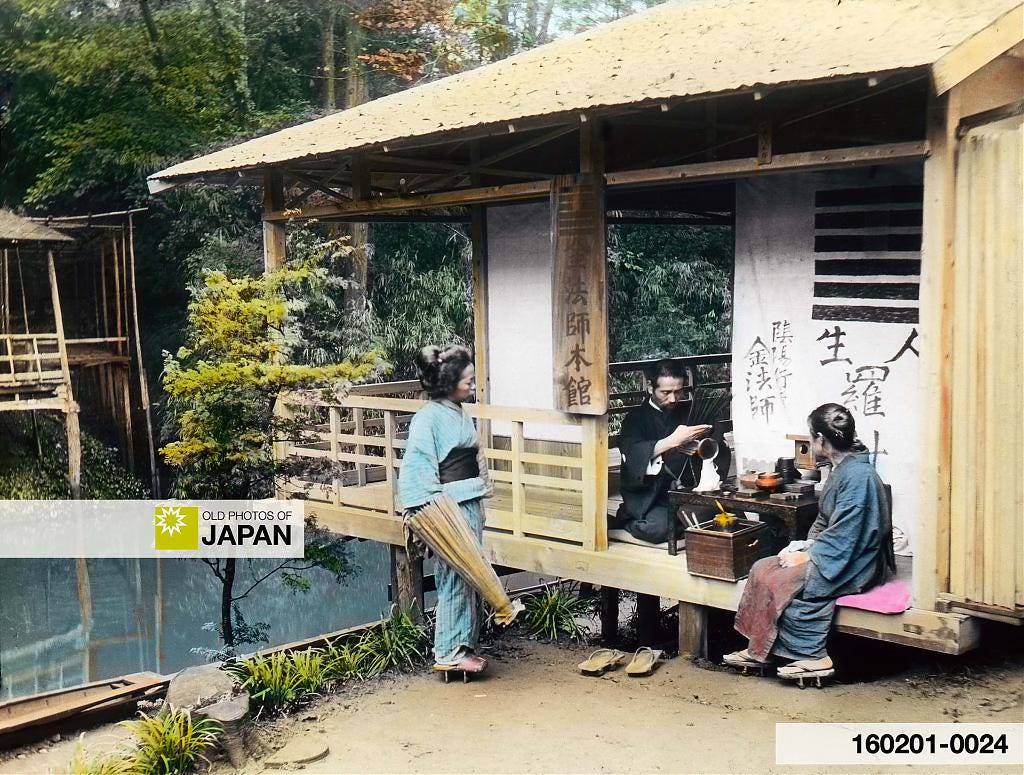


A hibachi is distinctively different from a modern heater. It cannot warm an entire room; it generally just warms one’s hands and feet, and the resident cat.
But it offers something that we have lost in our efficient modern world. The hibachi’s gentle warmth and the red breathing glow of its smoldering charcoal on a delicate bed of fine, grey ash seem to slow down time and settle in one’s soul.
Even a staid 1987 (Showa 62) catalogue of cultural properties published by Tokyo’s Chūō-ku Board of Education captures this sentiment:2
Sitting around a hibachi, warming your hands while listening to the gentle bubbling sound of water boiling in an iron kettle, made time flow quietly.
Chūō-ku Board of Education (1987)
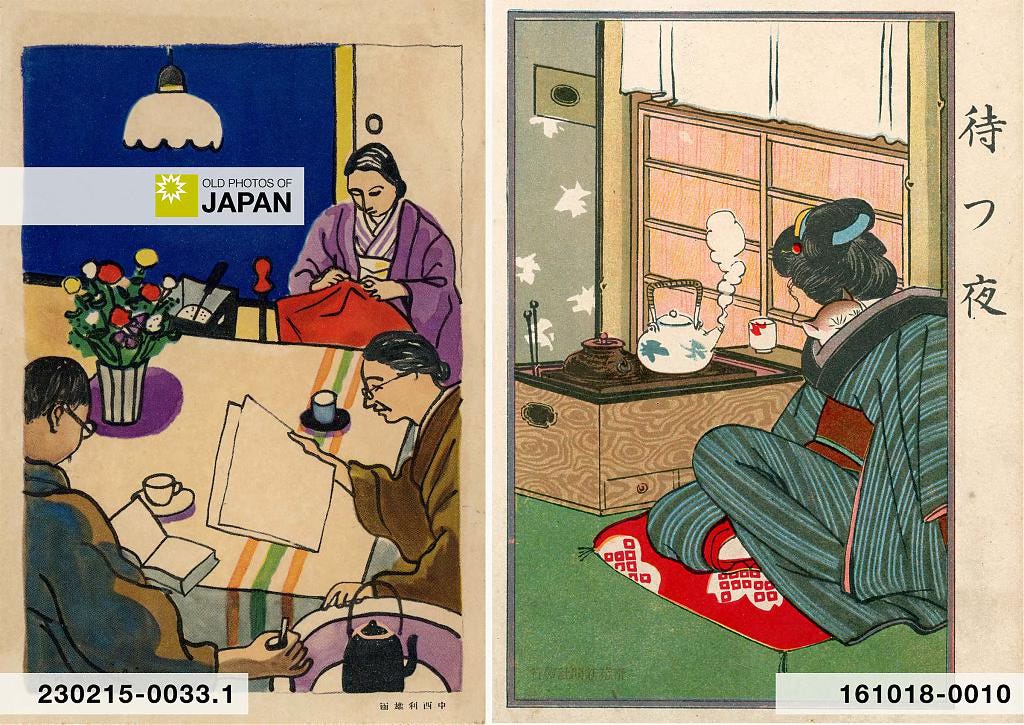
Today, hibachi still play a role in the tea ceremony, and countless antique ones are used for interior decoration. However, hibachi as heaters have largely vanished from daily life. They are even rare at traditional inns.
Yet, until the mid-1950s they were an indispensable feature of nearly every Japanese home, shop, and restaurant. They offered warmth and comfort at parliament, train station waiting rooms, and brothels. They warmed the hands of the privileged, the downtrodden, and everybody in between.

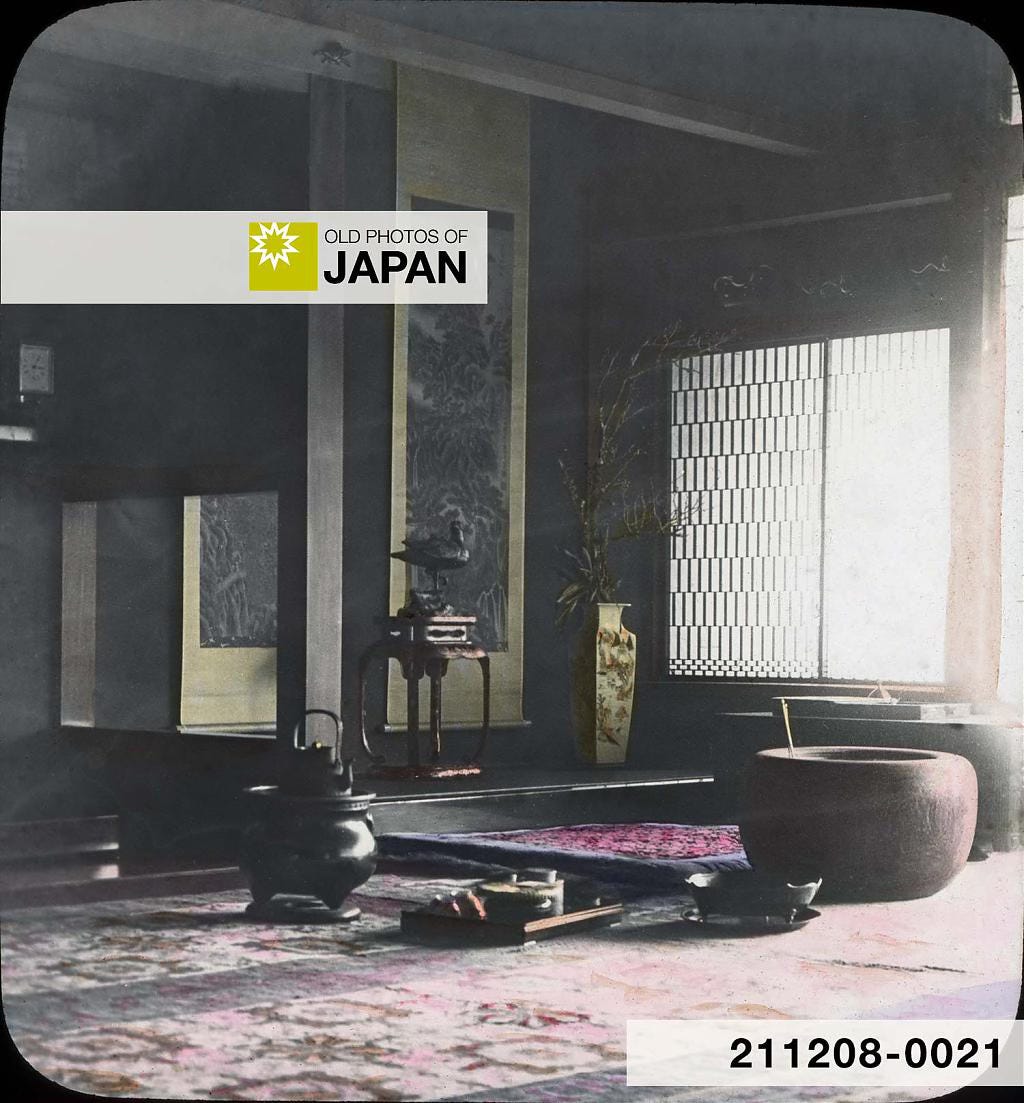

Much like irori, hibachi served not only as a source of heat but also as a social focal point. As such, they frequently appear in pre-WWII Japanese novels and short stories, often to evoke a particular mood or season. In traditional Japanese poetry, hibachi is an established seasonal word to indicate winter (冬の季語, fuyu no kigo).
One of the earliest mentions of a hibachi was written by court lady Sei Shōnagon (清少納言, ca. 966–1017 or 1025) in The Pillow Book, a record of observations and musings. It was written ten centuries ago, but feels surprisingly relatable:3
A seasonal directional taboo or the like has sent you on a roundabout route, and you’ve made your way back late on a bitterly cold night, teeth chattering so hard your jaw aches. Finally you arrive, and draw up the brazier – and how absolutely wonderful it is to discover, when you unearth the charcoal from beneath the fine ash, that the fire is still as alive as ever, with no burnt-out blackened bits.
On the other hand, I hate it when you’re sitting so deep in conversation with someone that neither of you bothers to notice the fire has burnt down to nothing, and then someone else comes along and makes it their business to fuss about putting in fresh charcoal and relighting it.
Mind you, it’s nice when the pieces of charcoal are placed in a circle with the flame enclosed in their centre. What really annoys me is when someone pushes aside all the pieces that are still glowing, makes a fresh mound of charcoal and relights it at the top of the mound.
The Pillow Book (2006), 237–238

Foreigners visiting Japan during the Meiji period (1868–1912) have arguably left us the most descriptive narratives. British photographer Herbert Ponting (1870–1935) was so captivated by the hibachi that he devoted six pages to it in his memoir In Lotus-Land Japan (1910). In addition to describing its forms and uses, Ponting stresses the hibachi’s central role in Japanese social life:4
Around the hibachi circulates not only the domestic but also the social life of Japan. All warm themselves at it; tea is brewed by means of it; guests are entertained, chess played, and politics discussed beside it; secrets are told across it, and love is made over it. The hibachi, in fact, is accessory to so many of the thoughts and sentiments of life in this land that it is easily the most characteristic object of Japan.
In Lotus-Land Japan (1910), 268
Making love over a roasting hot hibachi sounds decidedly sadomasochistic. But when Ponting wrote his memoirs, making love did not yet mean having sexual intercourse. It referred to romantic flirting, whispering sweet amorous words, and gazing longingly into each others’ eyes.5
One can only imagine how thrilling it must have been to fall in love while seated close together at a hibachi, with each other’s hands so tantalizingly near.
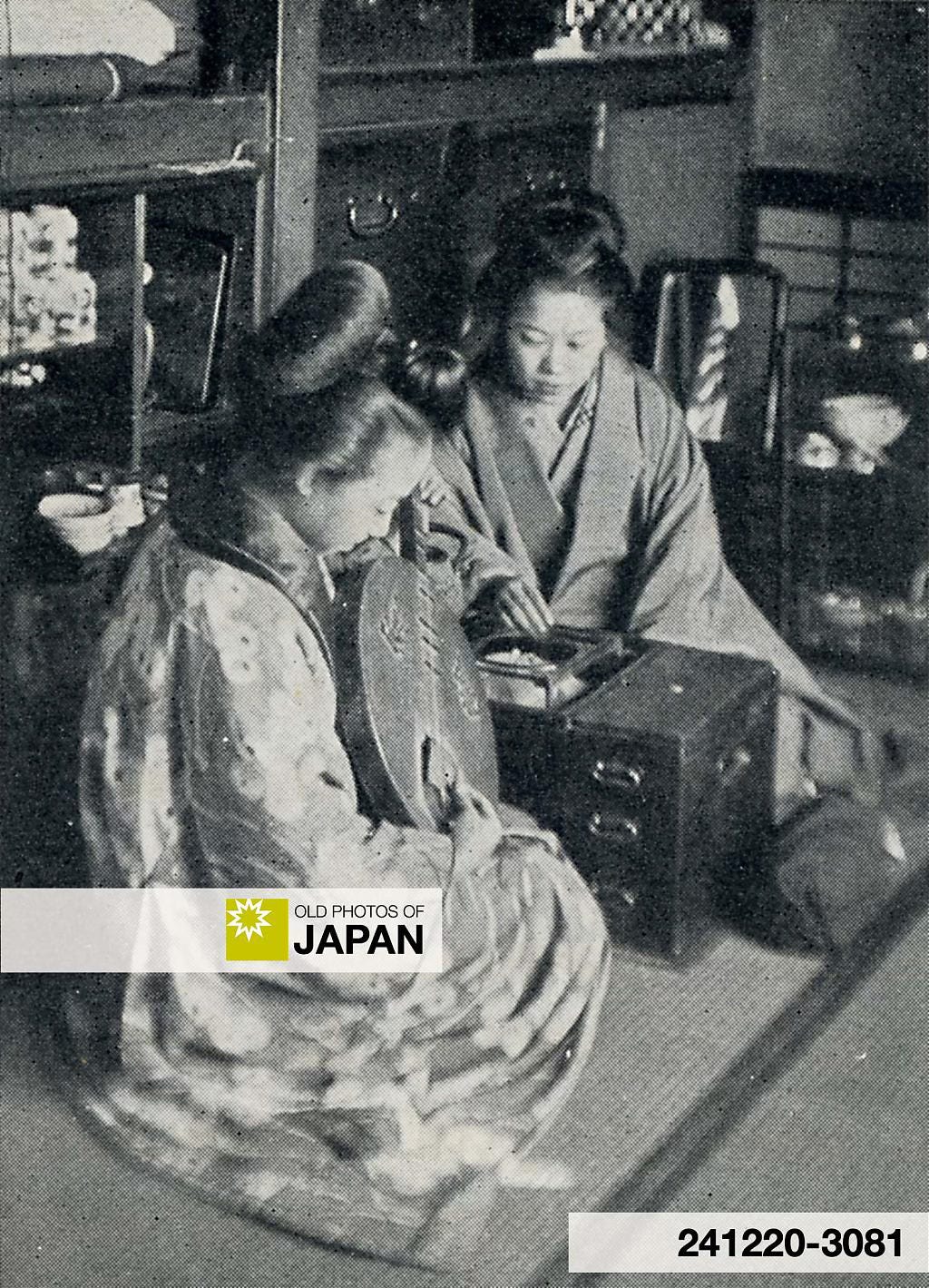
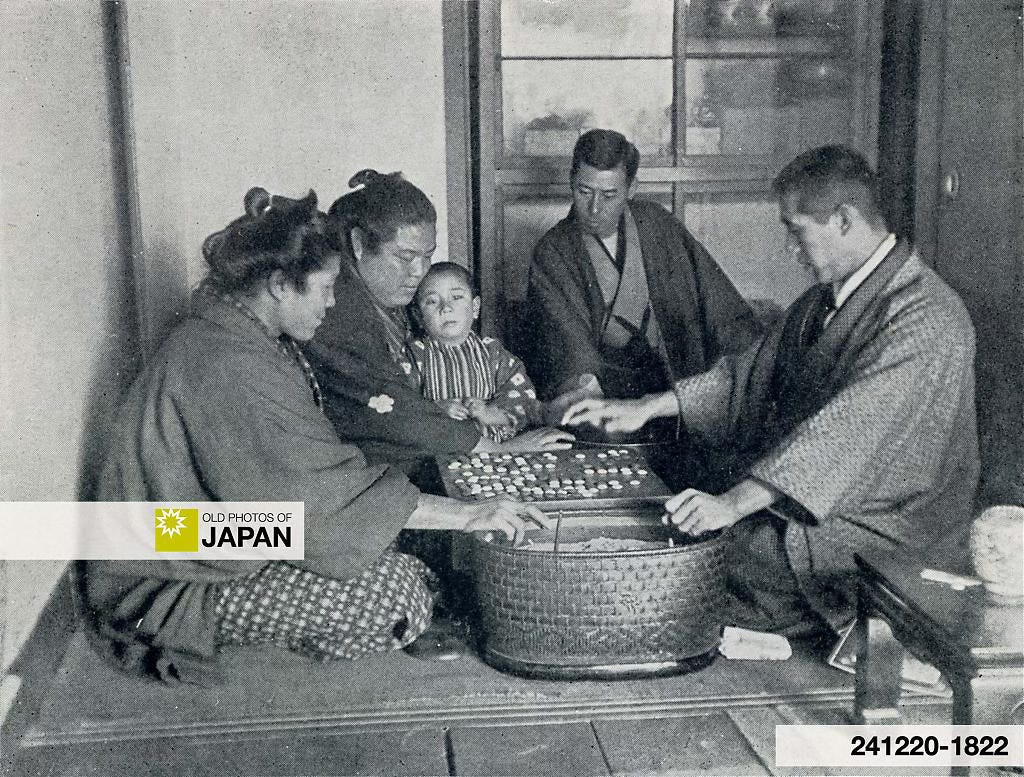
Ponting was not the only foreign visitor who fell in love with the hibachi. In the next article we will read some of the most informative descriptions of hibachi during the Meiji Period, many written by a now mostly forgotten British journalist and poet. We also look at when and how the hibachi vanished from the scene.
Continue to Part 4 : Japan’s Mistresses of Fire.
Warning
To prevent carbon monoxide poisoning or fire, a traditional hibachi requires a well-ventilated space, specific types of charcoal, and knowledge of safe handling. Study safety requirements before using one indoors.
Notes
Ponting, Herbert George (1910). In Lotus-Land Japan. London: Macmillan and Co., Limited, 265.
中央区の文化財 6 (有形民俗文化財 道具類 2). 東京都中央区教育委員会社会教育課, 5.
Sei Shōnagon; McKinney, Meredith (2006). The Pillow Book. London: Penguin Group, 237–238.
Ponting, Herbert George (1910). In Lotus-Land Japan. London: Macmillan and Co., Limited, 268.
Quinion, Michael B. Making love. Retrieved on 2025-02-11.





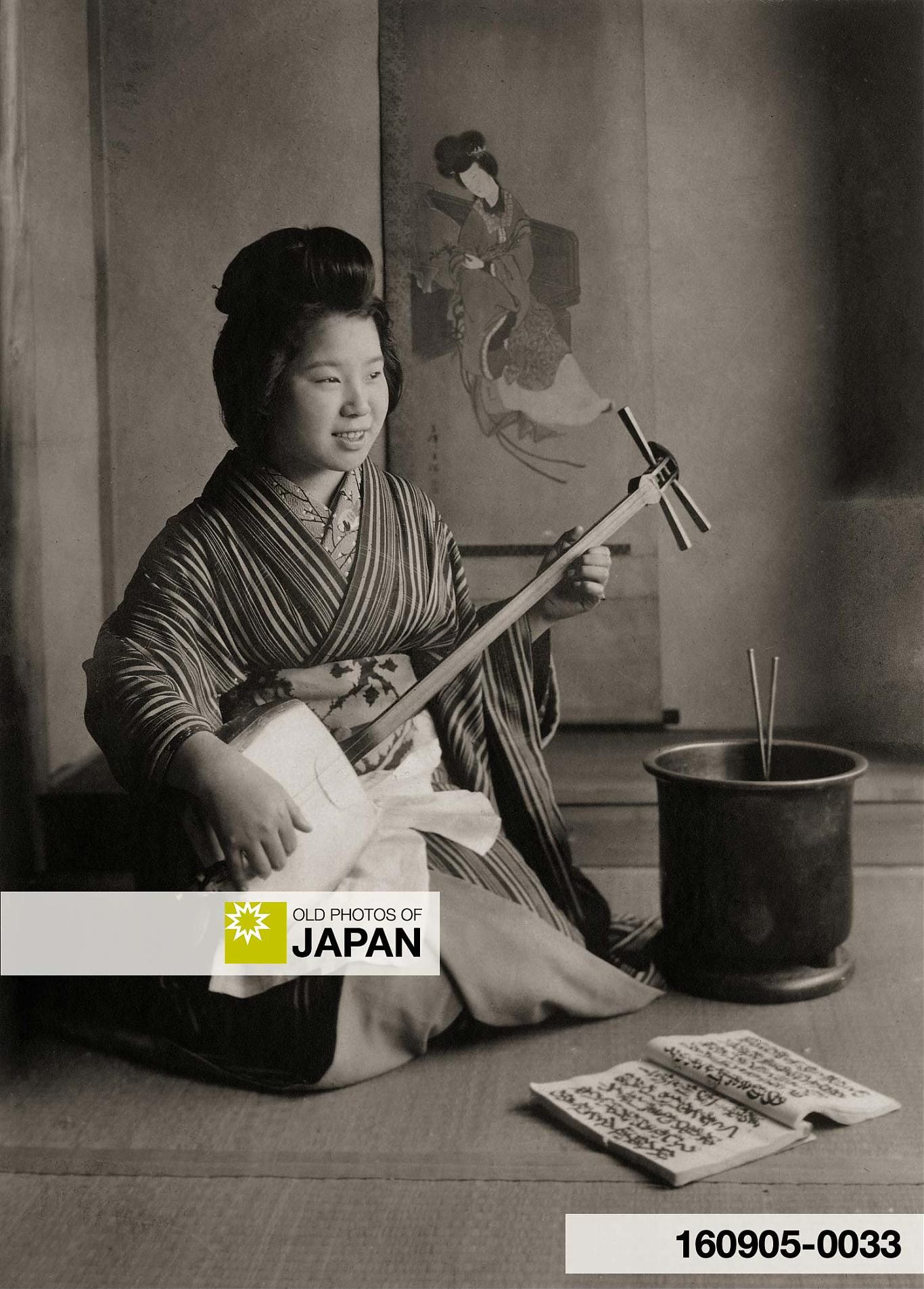
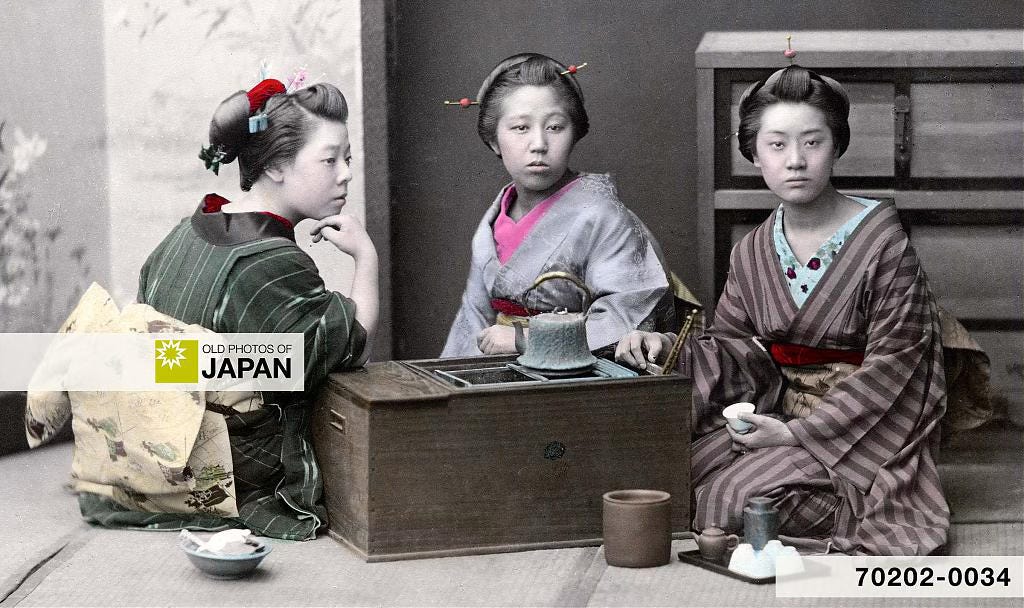
Thank you for this. Though most Japanese homes now have heat pumps and the like, I feel like the life experience is missing things like depth, slowness, contemplation, and maybe most of all, an appreciation of life itself.
We lived in an 80 year old townhouse in Osaka for some years and purposely did NOT install a modern heating or cooling system. There were definitely some days that were difficult, but I have never felt more appreciation for the simple things in my life as I did in that time.
This writing and the images remind me of how the slightly painful experience of being cold when one gets up in the morning, makes us also pay more attention and appreciation to a hot cup of tea, or the warmth of a kotatsu or hibachi, or all the modern conveniences we do have.
Personally, I found that way of life helped me to limit (not over-indulge or take for granted) those conveniences. Heaven knows, we all can get far too carried away with our own inventions!
I am not sure that this can be understood by anyone who has not experienced it, but I am relatively certain that once you do, your view of life will change in a good way ;-)
Also, we didn't have a hibachi, but after reading this, I would consider one for our future home ;-)
This was really informative, thank you! Maybe it's just tea ceremony but when we work with the hibachi, it does heat up the entire room, especially the seat by the fire... And I've gotten sick from it before. It's great to get some more context for this device I've only ever experienced in tea rooms!